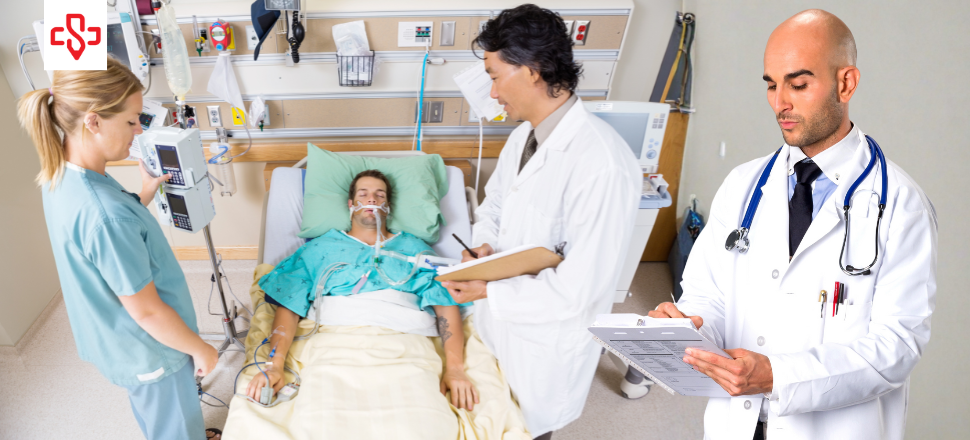Specialty medicine has a rhythm all its own. A dermatologist might see dozens of patients in a single day, moving from mole checks to biopsies. A cardiologist manages complex follow-ups and test reviews while balancing new patient consults. A urologist might juggle procedures alongside outpatient visits. What do these specialties have in common? The relentless pace leaves little time for documentation.
That’s where live medical scribes step in. By handling EMR tasks in real time, they allow providers to focus fully on patients without sacrificing accuracy or compliance. While emergency departments often dominate the conversation around scribes, specialties like dermatology, cardiology, and urology thrive just as much — if not more — with on-site support.
Why Specialty Clinics Need Documentation Support
- High Patient Volumes
Specialists often see patients in quick succession. Dermatology visits may last just 10–15 minutes. Without a medical scribe, even small delays in charting can snowball into hours of backlog.
- Detail-Heavy Notes
Specialty care requires precision. Cardiology notes include test interpretations and medication adjustments. Dermatology notes may need lesion mapping and procedure details. EMR scribes trained in these workflows ensure accuracy without slowing down the clinic.
- Reimbursement at Risk
Specialty billing codes are detail-sensitive. Missing elements in documentation can lead to downcoding or claim denials. A live medical scribe ensures every requirement is captured, protecting revenue.
Dermatology: Efficiency Without Compromise
Dermatologists see some of the highest patient volumes in medicine. A missed detail — such as the size or location of a lesion — can compromise both compliance and continuity of care.
Live scribes:
- Record findings during exams in real time.
- Document procedures such as biopsies or cryotherapy.
- Ensure follow-up instructions are captured accurately.
Instead of charting late into the evening, dermatologists finish their day with completed records.
Cardiology: Managing Complexity at Scale
Cardiologists often manage intricate patient histories that span years. Between EKG interpretations, medication adjustments, and test results, documentation piles up quickly.
A live medical scriber helps by:
- Documenting provider impressions during patient consultations.
- Recording test results and treatment changes in real time.
- Organizing data to ensure continuity across visits.
As one cardiologist put it in AMA News: “With a scribe in the room, I can focus on explaining results to my patient instead of staring at the EMR.”
Urology and Other Specialties: Precision Matters
In urology and similar fields, procedures and outpatient visits often overlap in the same day. Providers can’t afford to choose between charting and moving quickly to the next patient.
Live scribes ensure:
- Procedure notes are captured fully and compliantly.
- EMR records stay updated in real time.
- Providers maintain efficiency without cutting corners.
For specialties where precision is critical, scribes provide both speed and accuracy.
Why On-Site Beats Remote in Specialty Care
Some practices consider telescribing or medical scribe online services to cut costs. While remote models work in certain settings, they often fall short in specialty clinics.
- Nonverbal Cues: Dermatologists may point to lesions or cardiologists may review imaging silently. Remote scribes miss these moments.
- Quick Clarifications: Providers can signal live scribes with shorthand or gestures — impossible with telescribing.
- Workflow Integration: On-site scribes become part of the clinical team, building trust with providers and staff.
For high-volume specialties, live medical scribes are simply more reliable.
The ROI for Specialty Practices
Productivity Gains
With scribes handling EMR tasks, providers move through patient visits faster, often seeing additional patients per day.
Revenue Protection
Accurate, detailed notes ensure claims are coded correctly and reimbursed promptly.
Provider Satisfaction
Fewer after-hours charting sessions reduce burnout, keeping providers more engaged and less likely to leave the practice.
Even small 1–2 provider clinics benefit, especially when they’re clustered around larger hospital systems that use shared scribe pools for coverage.
Compliance and Quality Assurance
Specialty care often falls under payer and regulatory scrutiny. Detailed documentation is a safeguard against audits and compliance risks.
EMR scribes help by:
- CaLive Scribes for Cardiology Dermatology and Morepturing every required detail during patient encounters.
- Standardizing notes across providers within a clinic or system.
- Ensuring documentation aligns with coding and compliance requirements.
This attention to detail protects both providers and the health system as a whole.
The Patient Experience: Less Screen Time, More Face Time
When specialists spend more time typing than talking, patient trust suffers. Live medical scribes allow providers to:
- Make eye contact.
- Explain procedures and test results clearly.
- Spend visits listening, not clicking.
Patients notice the difference. A study in Health Science Report found that physicians perceived as attentive scored significantly higher on patient satisfaction surveys.
Precision Care, Powered by Scribes
From dermatology to cardiology and beyond, specialty medicine thrives on precision and efficiency. Yet EMR demands too often slow providers down, compromise accuracy, and increase burnout.
Live medical scribes solve this challenge. By documenting in real time, they:
- Keep patient flow moving smoothly.
- Ensure compliance and protect revenue.
- Allow providers to focus on care, not clicks.
In high-volume specialty settings, scribes aren’t just helpful — they’re essential. For clinics aiming to deliver efficient, compliant, patient-centered care, the solution is clear: bring in the scribes.



